Last Saturday we made our third visit to Fancott Meadows, a Coronation Meadow which is managed by the BCN Wildlife Trust. This time we went along with our local Wildlife Trust group led by Graham Bellamy. The forecast was rain and I had packed my camera into a waterproof bag, as we arrived in the carpark I realised I had left the bag and camera on the kitchen counter top at home.
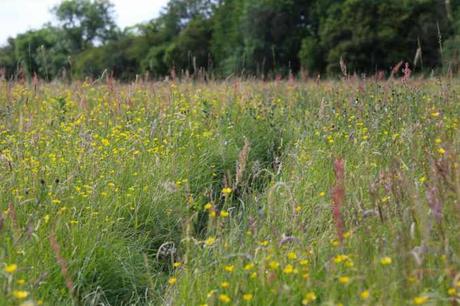
Fancott Meadows
That turned out to be a blessing in disguise as the photos I took on my phone were so appalling it meant we had to visit again late Tuesday afternoon, the sun shone and some of the Butterflies we had hoped to see on the gray overcast Saturday morning were now enjoying the sunshine and flitting through the meadows.
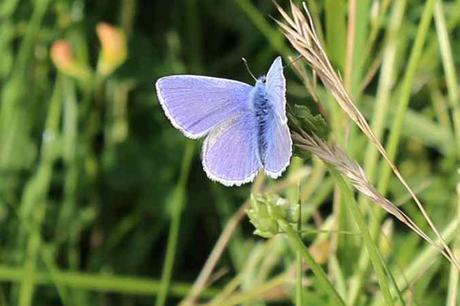
Common Blue
Fancott was bought by the Trust in 2007 from a local retiring farmer, horses had been grazing these fields, now Red Poll cattle and Hebridean Sheep are brought on at specific times to graze the meadows, we are told this is a more sympathetic way to manage the meadows both for plants and the wildlife. The old method of cutting the meadows would have removed the invertebrates habitat in one fell swoop.
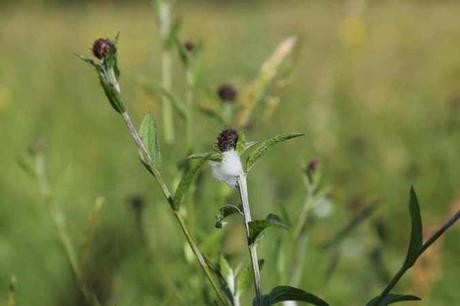
Cuckoo Spit on Black Knapweed
But for our cool summer, the Black Knapweed would usually be in flower by now. Cuckoo spit is the secretion of Froghopper nymphs, nothing to do with the bird. The nymphs live inside the “spit” until ready to fledge as the Froghopper insect.
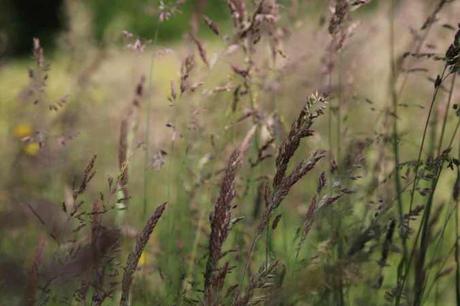
Holas lanatus Yorkshire Fog – the soft and very tactile flowers open and dance in the breeze
There were swathes of Yellow Rattle – Rhinanthus minor which produce tiny seeds that rattle around in the papery brown calyx, hence the common name. Its a hemiparasite, its roots grow into the roots of its neighbours, usually grasses taking their nutrients.
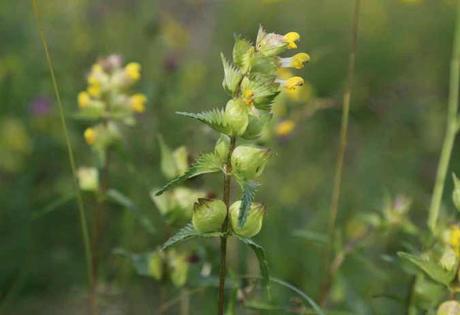
Yellow Rattle
The meadows are divided into two, with wooden gates and traditional hedging forming the boundaries. The second is a flood plain meadow and supports Meadowsweet, Filipendula ulmaria, as its edging towards invasive the Trust are monitoring its spread, if allowed to take over, other plants of interest would be crowded out. In flower and en-masse its quite a sight, right now its a little drab. The plant was used as a flavouring in Mead, hence its common name.
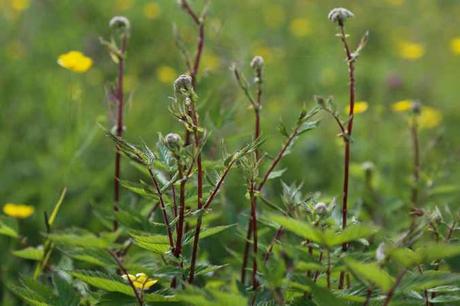
Meadowsweet
There were Orchids, Heath, Common and a Frog Orchid, not a looker but a rarity.
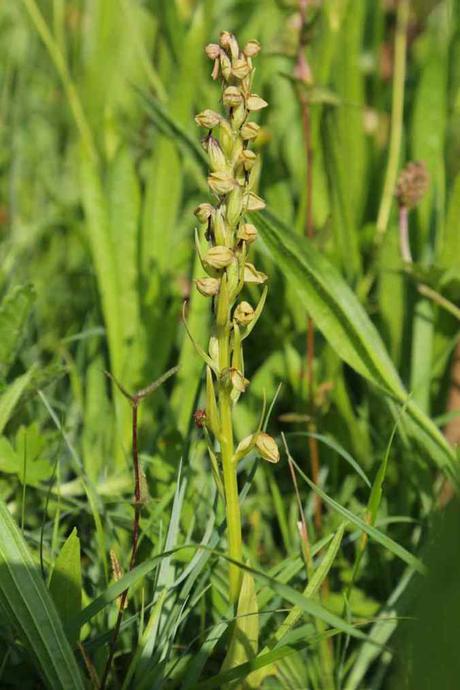
Frog Orchid Coeloglossum viride
Our native Marsh Thistle distinguished by their cluster heads were the tallest plants towering above the other meadow plants and can reach up to 200cms tall.
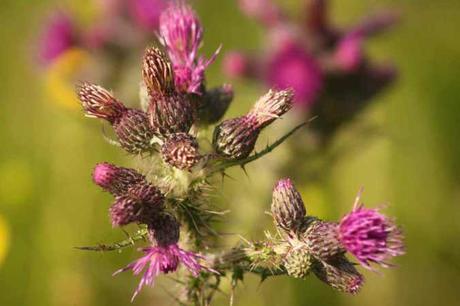
Marsh Thistle Cirsuim palustre
Ragged Robin is nectar rich we waited a while for one of the Bees to land, but they seemed to prefer the Marsh Thistle on Tuesday.
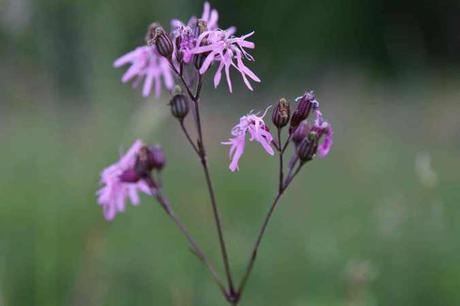
Ragged Robin Silene flos-cuculi
As we neared the end of our walk through the meadows we saw a small patch of Corn cleavers they have declined dramatically in the last 60 years, modern agricultural methods have done for it and this little plant is now very rare and classified as critically endangered.
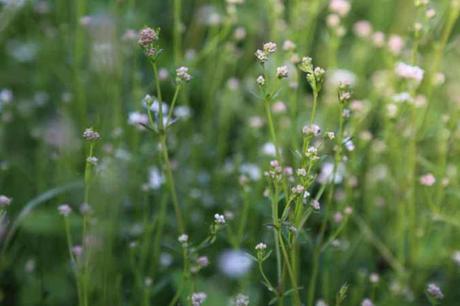
Corn Cleavers Galium tricornutum
The Wildlife Trusts are made up of 47 individual Trusts, collectively their mission is dedicated to protect and preserve wildlife and wild places. Lobbying the government to improve weak legislation and encouraging volunteers to be active and engage with our natural world. Our local Flitvale group are a lovely bunch of folk, sharing knowledge and their company, with some wonderful speakers and walk leaders, often for the cost of £1.00.
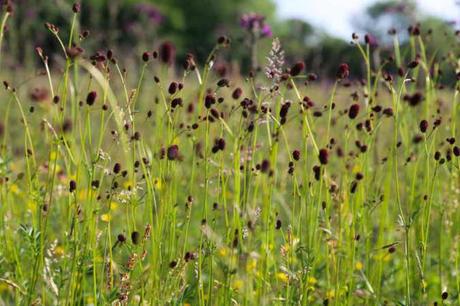
Great Burnet Sanguisorba officinalis
Last year we were to early to see Great Burnet Sanguisorba officinalis in flower, its a glorious sight. What a tragedy that so many of these wonderful meadows have been lost, once these would have been a common sight and now they are a rarity.
